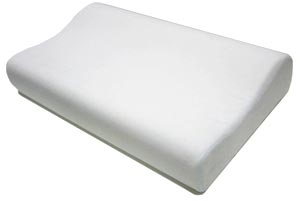Bicep Tendonitis
Updated:
(Also known as Bicep Tendinitis, Bicep Tendinopathy)
N.B. Although research suggests that ‘bicep tendinopathy’ is the more appropriate term to describe overuse injuries to the bicep tendon, we will use the term ‘bicep tendonitis’ in this document as it is more widely known.
What is bicep tendonitis?
Bicep tendonitis is a condition characterized by tissue damage, degeneration and sometimes local swelling of the bicep tendon causing pain in the front of the shoulder.
The muscle at the front of the upper arm is known as the biceps. The biceps attaches to the front of the shoulder blade via the short and long head of biceps tendons and then inserts into the forearm via the distal biceps tendon (figure 1).
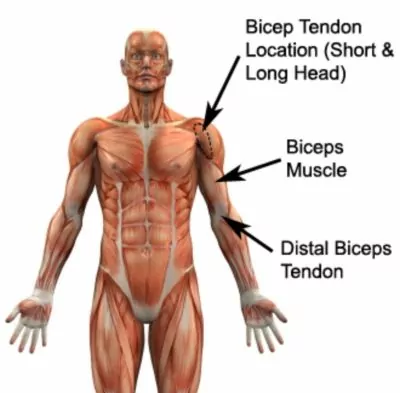
The biceps muscle is responsible for bending the elbow against resistance and assisting with arm elevation activities. During contraction of the biceps, tension is placed through the long head of biceps tendon. When this tension is excessive due to too much repetition or high force, damage to the biceps tendon may occur. Bicep tendonitis (long head) is a condition whereby there is damage to the long head of biceps tendon with subsequent degeneration and often swelling. This may occur traumatically due to a high force going through the biceps tendon beyond what it can withstand, or, more commonly, due to gradual wear and tear associated with overuse.
Causes of bicep tendonitis
Bicep tendonitis most commonly occurs due to repetitive or prolonged activities placing strain on the biceps tendon. This typically occurs due to excessive lifting (especially overhead), arm elevation activities (e.g. putting the washing on the line), heavy pushing or pulling, stretching the arm behind your back, throwing sports, sleeping on the affected side or use of the arm in front of the body (e.g. housework).
Occasionally, bicep tendonitis may occur suddenly due to a high force going through the biceps tendon beyond what it can withstand. This most commonly occurs during heavy lifting (e.g. during bench presses or dips at a gym) or with sudden elevation movements of the shoulder.
Signs and symptoms of bicep tendonitis
The symptoms of bicep tendonitis usually develop gradually over a period of time. Often, the pain associated with this condition is experienced as an ache in the front of the shoulder that increases to a sharper pain or catching pain with certain activities. Occasionally, pain may also be experienced in the upper arm, upper back or neck.
In patients with minor bicep tendonitis, little or no symptoms may be present. Some patients may experience pain on commencing activity that reduces as they warm up. These patients are usually able to continue sport or activity only to have an increase in pain, ache or stiffness upon resting later (particularly that night or the following morning). In severe or chronic cases the pain may be disabling, preventing the patient from performing further activity. Muscle wasting, weakness and night pain (regardless of position) may also be present.
Patients with bicep tendonitis will usually experience pain or difficulty when lifting heavy objects (especially overhead). Pain may also increase when performing overhead activities, elevating the affected arm, using the arm in front of the body, during heavy pushing or pulling, when lying on the affected side, when taking the arm behind the back or across the body or during throwing. Tenderness on firmly touching the front of the shoulder (long head of biceps tendon – figure 1) is also typically present.
Diagnosis of bicep tendonitis
A thorough subjective and objective examination from a physiotherapist is usually sufficient to diagnose bicep tendonitis. Occasionally, further investigations such as an ultrasound, X-ray or MRI scan may be required to assist with diagnosis and assess the severity of the condition.
Treatment for bicep tendonitis

Members Only ContentBecome a PhysioAdvisor Member to gain full access to this exclusive content. For more details see Become a Member. Already a member? Login Now
Prognosis of bicep tendonitis
Most patients with bicep tendonitis heal well with appropriate physiotherapy and return to normal function in a number of weeks. Occasionally, rehabilitation can take significantly longer and may take many months in those who have had their condition for a long period of time. Early physiotherapy treatment is therefore vital to hasten recovery and ensure an optimal outcome in all patients with this condition.
Contributing factors to the development of bicep tendonitis
There are several factors which can predispose patients to developing bicep tendonitis. These need to be assessed and corrected with direction from a physiotherapist. Some of these factors include:
- joint stiffness (particularly the shoulder or thoracic spine)
- muscle tightness (particularly the biceps or pectorals)
- inappropriate or excessive training or activity
- inadequate recovery periods from sport or activity
- inadequate warm up
- muscle weakness (particularly the scapula stabilisers and rotator cuff)
- poor posture
- shoulder instability
- abnormal biomechanics (e.g. poor throwing technique or stroke technique in swimming)
- Past history of shoulder injury
- bony anomalies of the acromion or AC joint
Physiotherapy for bicep tendonitis
Physiotherapy treatment for patients with this condition is vital to hasten the healing process, ensure an optimal outcome and reduce the likelihood of recurrence. Treatment may comprise:
- soft tissue massage
- electrotherapy (e.g. ultrasound)
- stretches
- dry needling
- joint mobilization
- ice or heat treatment
- the use of a sling
- exercises to improve strength, flexibility, shoulder blade stability and posture
- education
- postural correction
- postural taping
- technique correction
- anti-inflammatory advice
- training and activity modification advice
- a gradual return to activity program
Other intervention for bicep tendonitis
Despite appropriate physiotherapy management, some patients with this condition do not improve adequately. When this occurs the treating physiotherapist or doctor can advise on the best course of management. This may include further investigations such as X-rays, ultrasound, MRI or CT scan, pharmaceutical intervention, corticosteroid injection, autologous blood injection, or referral to appropriate medical authorities who can advise on any intervention that may be appropriate to improve the condition.
Exercises for bicep tendonitis
The following exercises are commonly prescribed to patients with bicep tendonitis. You should discuss the suitability of these exercises with your physiotherapist prior to beginning them. Generally, they should be performed 2 – 3 times daily and only provided they do not cause or increase symptoms.
Your physiotherapist can advise when it is appropriate to begin the initial exercises and eventually progress to the intermediate, advanced and other exercises. As a general rule, addition of exercises or progression to more advanced exercises should take place provided there is no increase in symptoms.
Initial Exercises
Shoulder Blade Squeezes
Begin this exercise standing or sitting with your back straight. Your chin should be tucked in slightly and your shoulders should be back slightly. Slowly squeeze your shoulder blades together as hard and far as possible provided it does not cause or increase symptoms (figure 2). Hold for 5 seconds and repeat 10 times.
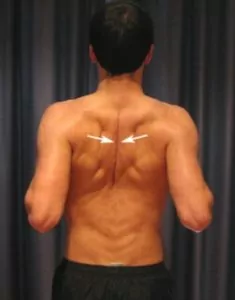
Pendular Exercises
Begin leaning forwards with your uninjured forearm supported on a table or bench. Keeping your back straight and your shoulder relaxed, gently swing your injured arm forwards and backwards as far as you can go without pain and provided you feel either nothing, or, no more than a mild to moderate stretch (figure 3). Repeat 10 times provided the exercise does not cause or increase symptoms. Repeat the exercise swinging your arm side to side provided it is pain free.
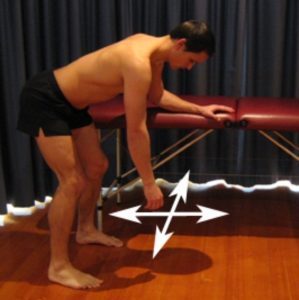
Pendular Circles
Begin leaning forwards with your uninjured forearm supported on a table or bench. Keeping your back straight and your shoulder relaxed, gently swing your arm in circles clockwise as far as you can go without pain and provided you feel either nothing, or, no more than a mild to moderate stretch (figure 4). Repeat the exercise swinging your arm counter clockwise. Repeat 10 times in each direction provided the exercise does not cause or increase symptoms.
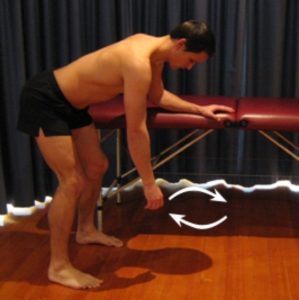
More Initial Exercises

Members Only ContentBecome a PhysioAdvisor Member to gain full access to this exclusive content. For more details see Become a Member. Already a member? Login Now
Intermediate Exercises

Members Only ContentBecome a PhysioAdvisor Member to gain full access to this exclusive content. For more details see Become a Member. Already a member? Login Now
Advanced Exercises

Members Only ContentBecome a PhysioAdvisor Member to gain full access to this exclusive content. For more details see Become a Member. Already a member? Login Now
Other Exercises

Members Only ContentBecome a PhysioAdvisor Member to gain full access to this exclusive content. For more details see Become a Member. Already a member? Login Now
Rehabilitation Protocol for bicep tendonitis

Members Only ContentBecome a PhysioAdvisor Member to gain full access to this exclusive content. For more details see Become a Member. Already a member? Login Now
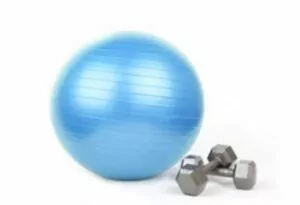 Physiotherapy products for bicep tendonitis
Physiotherapy products for bicep tendonitis
Some of the most commonly recommended products by physiotherapists to hasten healing and speed recovery in patients with this condition include:
To purchase physiotherapy products for bicep tendonitis click on one of the above links or visit the PhysioAdvisor Shop.
 Find a Physio for bicep tendonitis
Find a Physio for bicep tendonitis
Find a physiotherapist in your local area who can treat bicep tendonitis.
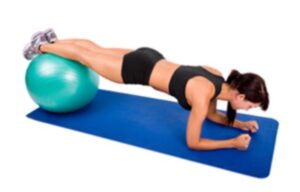 Other Exercises
Other Exercises
- View more Biceps Stretches.
- View more Biceps Strengthening Exercises.
- View more Shoulder Stretches.
- View more Shoulder Strengthening Exercises.
- View Scapular Stability Exercises.
- View Upper Back Flexibility exercises.
 More Information
More Information
- Read about Postural Taping.
- Read about improving your Posture.
- View detailed information on when to use Ice or Heat.
- View detailed information on initial injury management and the R.I.C.E. Regime.
- View detailed information on Warming Up and Cooling Down.
- View detailed information on Returning to Sport.
- View our Shoulder Diagnosis Guide
Become a PhysioAdvisor Member

Link to this Page
If you would like to link to this article on your website, simply copy the code below and add it to your page:
<a href="https://physioadvisor.com.au/injuries/shoulder/bicep-tendonitis”>Bicep Tendonitis – PhysioAdvisor.com</a><br/>PhysioAdvisor offers detailed physiotherapy information on bicep injury and bicep tendonitis including: signs and symptoms, causes, diagnosis, treatment, exercises, physiotherapy products and more...
Return to the top of Bicep Tendonitis.











